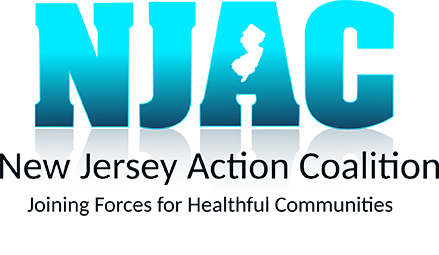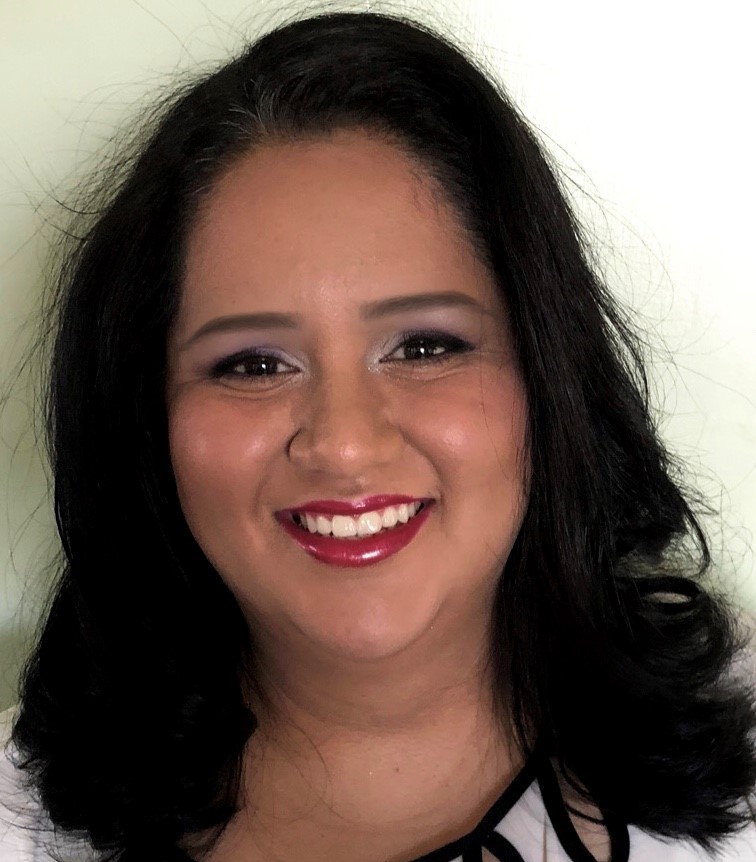Cathlyn Robinson, MSN, CNS in Trauma, Clinical Education Specialist
Fiorela Guevara, BSN, TNCC
Cathlyn works as the ED Nurse Educator at St. Joseph’s in Paterson and Wayne. She’s been a nurse for 28 years.
Fiorela works in the ED at St. Joseph’s as a staff RN. She has been a nurse for 2 years.
Cathlyn: Cathlyn related that she and Fiorela have been working together since Fiorela started working in the ED. Cathlyn shared her involvement with the NJAC began after St. Joseph’s started the Alternatives to Opioids program and Jennifer P, posed the idea of bringing it into the community as an education program. The Alternative to Opioids program was launched in 2016 in response to St. Joseph’s surrounding community being “the heroin capital of NJ”. Many people receive their first opiate dose in an ED to treat pain no matter the source. With the Alterative to Opioids program the root cause of the pain is more closely assessed, alternative medications and treatment modalities are planned when appropriate. Cathlyn noted that there are algorithms and set medications so the Alternative to Opioids program is based on evidence-based guidelines and not left to each practitioner to decide for themselves. Another hallmark of the program is St. Joseph’s community connection to Eva’s Village, which is a local organization that serves as a drug treatment and management program. When the ED has a patient, who needs addiction treatment or who has presented with an overdose, the counselors from Eva’s Village will come to the ED. Then the ED and Eva’s Village’s counselors will have a warm handoff, that assures that these patients get into the rehab program they need. The Alternative to Opioids program has now been implemented on other units and the goal is the have the program be systemwide. Cathlyn explained the target audience of the community education was senior citizens with the goal of educating them about pain control. Through Jenn, I was connected to many senior centers. I presented my education programs to the various seniors; however, it became apparent that there was a large population of people who spoke Spanish. That’s how Fiorela came aboard. She didn’t just come to translate, she translated my educational PowerPoint into a Spanish version and taught the class solely in Spanish. Now we have the ability to present the program bilingually. Which is kind of amazing! Fiorela did not stop there. She was determined to look at other programs that could serve the Spanish community.
Fiorela: My first outreach with Cathlyn, I saw that some of the Hispanic residents were asking more questions, feeling more comfortable, and started asking questions in Spanish. They requested if we could ever return, could there be a solely Spanish program. I didn’t want there to be an English PowerPoint and then I was speaking solely in Spanish, so I developed a Spanish PowerPoint. Now I do the lecture completely in Spanish. The last one I did was right before COVID started. I did half of the day in English and the other half of the day in Spanish. There was such positive reviews Jenn started booking the program for bilingual presentations.
Another area I noticed that was a big communication problem for our Hispanic community was information on the signs and symptoms of stroke. We are located in a heavily Hispanic community and I think, Cathlyn can probably back me up on this, out of every 10 patients we see in the ED, probably eight are Hispanic, and five of those solely speak Spanish. We are missing that communication with our patients. What I was observing in our ED, was that patients were showing up 2-3 days into their stroke and with significant symptoms. Every time I asked them why they waited so long, the answer was the same…. “I don’t know the signs of stroke”. There are posters throughout the hospital with the acronym FAST for the signs of stroke, but to somebody that doesn’t understand the language it’s just pictures. It’s very hard to put two and two together, so I became the bridge in the communication gap. We have a stroke team at St. Joseph’s, but these patients were not able to use their services. So, I made up an equivalent acronym in Spanish so it would be easier for people who don’t know the quick signs of stroke to understand, instead of waiting days to be seen and designed a presentation. I tested it out on my family, of solely speaking Spanish members first and they understood. Just as we remember FAST, they remember the four D’s of stroke. After the last Alternative to Opioids program I was able to speak about the new stroke program and there was excitement about the new program. So, I contacted Jenn, but before we could get a date, COVID happened.
Cathlyn: To clarify the Stroke program is being presented with the NJAC, the Alternative to Opioids program started at St. Josephs and then was brought into the community in coordination with NJAC.
Fiorela: Correct, but the stroke program will be launched and published within St. Joseph’s as well. This is because, I saw a need within our community that our hospital could facilitate, but the connection to the resources were not able to be used because a very simple thing like communication…. a language barrier. We [the nurses] were not advocating for patients correctly. The patients couldn’t communicate with us and in turn we couldn’t communicate their needs to the hospital. So, I became that voice.
These experiences have changed my view of nursing 100%. It led me to applying to graduate school to become an APN, with a DNP degree to serve in my community. My ultimate goal is to open a clinic in an urban community where I can care for patients. Since I do speak both languages it makes it easier.
Cathlyn: This has been a wonderful extension of what we do as ER nurses. We don’t just resuscitate, we educate. We educate our patients before they go home; on care at home and signs and symptoms to seek care again. So, I think there is a lot of room for extension of that teaching in the community. At St. Josephs, the leadership in the ED is very supportive of our community outreach programs. The leadership agreed that yes, the nurses could go out into the community and represent St. Josephs. They agreed to compensate them for time, but there’s still a great deal that is volunteering. Fiorela’s work on translating the PowerPoint and the hours she spends transporting to and from the program sites; that is 100% volunteering time. However, St. Josephs supports Fiorela, and other nurses, by giving them protected time to go out into the community. It is important for me to be a mentor for new nurses such as Fiorela, although Fiorela doesn’t need me for the Spanish stuff, she knows I’m always there for back up. It is always amazing to me to see how some good personal reflection and professional identification on where she [Fiorela] wants her career to go…. And if I had one little piece to play in that by getting her an opportunity, I am thrilled.
Fiorela: Our career isn’t you know filling orders and watching monitors…we don’t monitor monitors we care for people. We learned everything in four years out of a textbook, but now we have real patients, real people, and the symptoms aren’t always going to match. So, we don’t treat diseases, we treat people. Our ED is the welcoming department between the community and our facility. We are the connection. As much as we advocate for our patients within the four walls of the ED, we should advocate for them within the four walls of our town, our county. They need to know that we are here for them, that we hear them, we understand them, and can communicate with them. So, volunteering is just away of advocating for patients… the patients that you see every day.
Cathlyn: Like Fiorela was saying, it’s advocating for your patients. The other thing is, I think it’s important for developing nurses to help them feel a part of something that’s bigger than themselves.
Fiorela: (on volunteering); Find something that means something to you. Because if you’re not passionate about something it’s not going to mean anything to you. For me, my thing is speaking or helping out my community, which as a Hispanic, Latina, that is my passion. I work in a facility that allows me to make changes in the organization to be able to facilitate our community.
Cathlyn: The other thing too is, I don’t think that nurses realize the potential they have to contribute. We are one of the most trusted professions in the world and I think we have the ability to communicate, we have the background to provide education and be a part of the community. As Fiorela was saying: figure out what you like. I am a parish nurse, I am the nurse for my church. It’s a volunteer position, but boy is it wonderful to be a part of a parish community and to be there as a resource. I teach CPR classes and I’m there to talk to parents about their new kids if they’re worried about something, or about cancer treatments, or whatever. As long as nurses really understand that we have the ability to contribute that is important.

